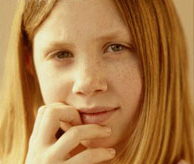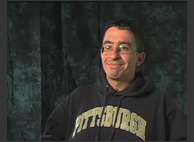| ASA: Treatment | |
| ASA: Learning Approaches | |
| Jeff, Age 35 | |
| Richard, Age 52 | |
| NIMH: Autism Spectrum Disorders (pdf) | |
| AAP - Medical Home & Early Intervention (pdf) | |

Treatment - Understanding Your Options
Treatment approaches are constantly evolving as more is learned about the autism spectrum. There are many therapeutic programs, both conventional and complementary, that focus on replacing dysfunctional behaviors and developing specific skills.
As a parent, it's natural to want to do something immediately. The literature states time and time again the importance of early treatment for individuals on the autism spectrum However, it is important not to rush in with changes. It does no good to push ahead with a treatment that is not appropriate for the individual or one that may be harmful. You also much consider the larger implications of beginning a new treatment. A child may have already learned to cope with his or her current environment and sudden changes or unexpected different expectations could be stressful and confusing. Various treatment approaches should be investigated and information gathered concerning various options before proceeding with any child's treatment.
Parents will encounter numerous accounts from other parents about successes and failures with many of the treatment approaches mentioned. Professionals also differ in their theories of what they feel is the most successful treatment for autism. It can be frustrating! Parents do learn to sift through the information, examine options with a critical eye and make rational, educated decisions on what is appropriate given the individual circumstance. Parents live with the individual on the spectrum every day and best know his/her needs and the unique ways that autism impacts their lives. Parents must be empowered to trust their instincts as various options are explored, considered and implemented.
The descriptions of treatment approaches provided here are for informational purposes only. They serve as overviews and should always be followed with contact with qualified professionals and should be discussed with parents or individuals on the spectrum who have person experiences. The Autism Society of America does not endorse any specific treatment or therapy.
While doing research, parents and professionals will hear about many different treatments approaches, such as auditory training, discrete trial training, vitamin therapy, anti-yeast therapy, facilitated communication, music therapy, occupational therapy, physical therapy, and sensory integration. These approaches can generally be broken down into three categories:
Learning Approaches
Biomedical & Dietary Approaches
Complementary Approaches
Some of these treatment approaches have research studies that support their efficacy; others may not. Some parents will only want to try treatment methods that have undergone research and testing and are generally accepted by the professional community. But keep in mind that scientific studies are often difficult to do since each individual on the autism spectrum is different.
For others, formal testing might not be a pre-requisite for them to try a treatment with their child. Even for those with "scientific" proof, the Autism Society of America recommends that all options available are investigated to determine the approach that is most appropriate.
Experts agree though, that early intervention is important in addressing the symptoms associated with ASD. The earlier treatment is started, the more opportunity for the individual to reach their highest potential. Many of the approaches described can be used on children as young as age 2 or 3. They may also continue to be used in conjunction with special education programs or traditional elementary school for children who are mainstreamed.



